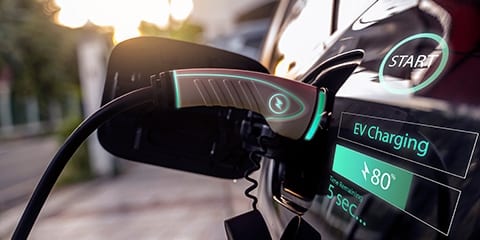EV manufacturers are keen to stress the importance of charging your vehicle up to 80% and some go further and recommend that the battery does not go below 20%. But how important is it? Charging an EV between 20% and 80% effectively gives your vehicle a range of 60% of the total mileage of the vehicle, which is not convenient for some drivers.
Like any rechargeable battery powered device, charging up to 100% all of the time can depreciate the battery at a faster rate. A mobile phone charged consistently to 80% will hold more kilowatt-hours of usage compared to a mobile phone topped up to 100% every night. A battery will naturally absorb less energy the fuller it becomes. Charging a battery between 20% to 80% however, is seen as the optimal range when there is less damage to the battery caused by overheating. The more heat a car battery is exposed to, the more the protective characteristics of the car battery are diminished, which affects the efficiency of the battery as well as shortening its life cycle.
EV’s do have protections built in to the vehicle to try and counter this. When the vehicle is charged outside of the optimum charging range, the vehicle will slow down the rate of charge and this is known as trickle charging. Charging a vehicle between 20% to 80% is usually at least twice as fast as charging outside of those ranges.
This is more prevalent when a vehicle is charged using a DC rapid charger. If your vehicle has a CCS or CHAdeMO socket then you will have noticed the significant slow down after the battery hits 80% and the charging rate may be much less than the 50% reduction you get when using the slower home wall boxes or AC public charging points that you might find at a retail park or supermarket. There are reasons for this. First, DC charging means that current is going straight to the battery and that equates to more current and more heat. AC charging points charge between 2kW to 22kW whereas DC charging points typically charge between 100kW to 150kW. That’s a lot of electricity being pumped into your vehicle. Secondly, there is the added problem of DC chargers being used when the car battery is already hot. It is recommended to charge the vehicle when the battery has cooled down, which is less likely if you are DC charging at a service station.
Reducing the charging rate can encourage drivers to move on once the battery reaches 80% as it makes more sense to take advantage of the faster charging rate when the battery is below 80%. It also helps to reduce the wait times for other EV drivers if all the charging points are occupied. Frustrating if that extra 20% is enough for the one trip, but that is likely the occasion when the decision to charge past 80% will be taken and, if we are honest, charging outside the optimum range now again is going to be less damaging to the battery than doing it every day. An owner of a PHEV or full electric vehicle with low range are less likely to find a practical way of keeping between the 20% to 80% range. EV’s with greater range however, are more likely to be able to.
So you may ask why you should bother with preserving the life cycle of the battery when you will only be in possession of your vehicle for 3 years. People who own rather than lease an EV are likely to be more diligent when it comes to protecting the battery. The battery is the most expensive component of an EV and replacing it could cost thousands at today’s prices. Drivers who lease their EV may be less willing to sacrifice convenience for an efficient battery, but as well as being another feather in the cap for being eco friendly, preserving the battery will maintain the efficiency of the vehicle to get more miles from each charge and that means having to charge less in the longer term. So it will save money. Some may see this as small gains, but it may persuade others that charging between 20% to 80% is worth it when convenient to do so.
As the range of vehicles increases, the 80% rule will be less of an issue. Vehicles that can travel over 500 miles from one charge will be able to keep to 80% more often than not. Until that point when 500+ mile vehicles are cheaper to own, it is about practicality vs preservation of the battery and that may be the driving factor that keeps second hand EV’s more expensive in the short term.
IF you want to charge your EV with an AC charging point, we have a range of Type 2 charging cables and Type 1 charging cables.
© 2023. Please do not reproduce without our permission



